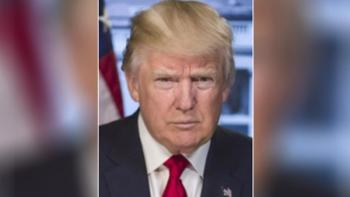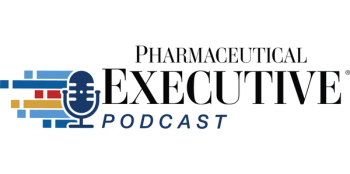
- Pharmaceutical Executive: October 2025
- Volume 45
- Issue 8
Navigating the Complexities of a Global Pharma Expansion
Key Takeaways
- Amber Edwards addressed Sinclair Pharma's integration issues by focusing on cultural transformation and operational integration, emphasizing transparency and trust-building.
- She realigned the executive team to embrace a global vision, integrating three separate businesses into a unified organization with a shared culture.
A case study in leading and guiding a cultural reset and strategic revival.
I've worked with Amber Edwards on multiple corporate transformations. So I was not surprised when Edwards was appointed CEO at Sinclair Pharma in the fall of 2024. She took command at a pivotal moment.
After being acquired in 2018 by Huadong Medicine Company Limited (HMC), a leading healthcare firm based in China, Sinclair had experienced rapid expansion. Venturing beyond its core expertise in aesthetics and injectables, the company purchased two capital equipment businesses, one in Spain and one in Israel. This ambitious expansion had created some serious integration issues, resulting in operational fragmentation across multiple geographies.
These and related issues are typical of overambitious global enterprises that reach beyond their grasp. What was impressive about Edwards was the speed with which she assessed the situation and the action plan she implemented to turn it around.
“When I arrived,” says Edwards, “there were three separate business models, three separate product lines, and three separate cultures across multiple headquarters, manufacturing plants, and offices. And between these three companies, there was a presence in more than 55 markets.”
The resulting complexity negatively impacted performance, with the company experiencing a 30% decline in value over the previous two years.
Alongside these problems, there were also communication and cultural challenges—ones that Edwards was uniquely positioned to address. Having previously served as Sinclair’s North American president, before the company paused its US expansion during the COVID-19 pandemic, she had firsthand experience navigating cross-cultural dynamics in a global organization.
“There are differences—not just in language, but in communication styles and expectations—that make alignment more nuanced,” she says. “These are common in global organizations, especially when diverse teams are working across time zones and cultures. It just requires extra attention and intentional collaboration. It is critically important to find common ground and mutual commitment between the Board and leadership team.”
Over time, internal cohesion had weakened. “The company culture had lost its clarity and direction,” Edwards recalls. “A survey conducted just before I joined revealed a few recurring themes: employees weren’t sure of the company’s identity, decision-making was unclear, and many felt challenged by high performance targets without the necessary support.”
These issues had contributed to high turnover and low morale. The challenge, then, was not merely to bring structure to the sprawl. Edwards saw from day one that she had to transform the company’s culture—the way that people spoke to, interacted with, and worked alongside each other.
Tasked with a turnaround
With strong support from HMC—a key subsidiary of the larger China Grand Enterprises Inc. (CGE)—Edwards launched an ambitious turnaround plan. One of her first steps was assembling a new executive team aligned with the company’s evolving global strategy.
“The previous leadership was still anchored in Sinclair’s legacy as a UK-based and Eurocentric organization,” Edwards explains. “They had contributed greatly to the company’s growth but found it difficult to adjust to the new direction. To move forward, we needed a team that could embrace a global vision and help build a shared future.”
Within her second month, she had realigned the executive suite, and in the following quarter, announced a major restructure to operationally integrate the three separate businesses into one streamlined organization with one united vision and culture.
“We committed to honest conversations and transparency. That had to start with leadership,” Edwards says. Her new team “were not just skilled operators—they were culture carriers.”
Once in place, she assembled them and shared what amounted to an article of faith: “We will have honest conversations in this room. No spin. If we don’t, we will not succeed.”
That commitment to transparency extended beyond the C-suite. Edwards launched roadshows and town halls, meeting with employees at every level to hear their concerns directly.
“I encouraged people to speak openly, to share what was working and what wasn’t,” she adds. “Don’t hold back. Don’t filter. Because I can’t fix what I don’t know about. It wasn’t about blame—it was about clarity.”
Those efforts helped Edwards gain trust. “When I later announced the new structure, I could say, ‘This is what you told me you needed.’ That made all the difference.”
Getting the whole organization to embrace this new mindset required an almost evangelical drive. Even though employees were “eager for clarity and candor,” Edwards points out, “years of organizational silence had eroded their confidence in speaking openly. People nodded in meetings, agreeing outwardly but feeling disconnected. We had to rebuild trust and psychological safety.”
As part of her commitment to culture-shifting, she instituted weekly leadership meetings where “everyone was expected to say what they had committed to, whether they delivered, and why or why not. Not in a punitive way—but to build integrity. That was the muscle we had to grow.”
Lessons from ‘the trenches’
Edwards may come across as someone who was born to guide global corporations, but she is the first to point out that her skills developed as the result of specific choices and discoveries early in her career.
She started out in the more traditional pharmaceutical world as a sales rep “in the trenches” with Parke-Davis, where a promotion into sales training gave her a first glimpse of what Edwards calls “loving leadership—watching someone go from being unsure, maybe lacking confidence, to becoming excited, passionate, and totally in their element—and knowing I helped guide them there,” she says.
Post-Parke-Davis, Edwards deliberately followed an unconventional route across the Big Pharma landscape—moving sideways from role to role rather than focusing on a purely upward trajectory.
“I’m a big believer in taking lateral moves,” she says. “I don’t think a great career is about staying in one lane and climbing the title ladder. For me, it’s been about stepping sideways to learn different parts of the business. That’s how you build real breadth and depth—by understanding the organization from multiple angles.”
That insight shaped Edwards’ path through key roles at Pfizer and Allergan, where she helped build Botox into a multi-billion-dollar brand and helped establish the medical aesthetics category.
That multifaceted experience equipped her to bring structure to Sinclair’s sprawling portfolio. “With nearly 30 products across three brands, we were spread too thin,” Edwards explains. “We needed focus.”
“So we narrowed our priorities through cross-functional workshops—bringing together R&D, operations, and commercial teams to map out where growth would come from over the next five years,” she continues. “We ultimately decided to focus all investment—R&D, registrations, new indications—on six key in-market products and two pipeline assets. The remaining brands would continue generating revenue, but without further strategic investment.”
Edwards also addressed a key challenge: reconciling Sinclair’s dual identity as an injectable aesthetics provider and a capital equipment company.
“Most companies don’t combine injectables and energy-based devices—it’s seen as a logistical and operations challenge,” she says. “But we saw it as an opportunity: with our portfolio, we can offer a more holistic aesthetics experience—lasers for skin rejuvenation and contouring, injectables for lines and wrinkles, and the flexibility to treat the whole person. It turned a pain point into a differentiator—and gave employees something they could rally behind.”
So far, the strategy appears to be working: Sinclair exceeded its revenue targets for the first five months of 2025. While Edwards decided recently to part ways with Sinclair, she noted at the time this article was written, the company was “tracking well against both top- and bottom-line goals,” and it expected to experience 18% growth over 2024.
For the longtime pharma leader, “the biggest win” is seeing real shifts in company cultures—and their impacts on business begin to take shape.
“Happier, more committed people drive performance,” she says. “I’m passionate about good products, and I’m equally passionate about people.”
Ken Banta is Founder and CEO of The Vanguard Network
Editor’s note: At the time this article was written, Edwards was driving Sinclair Pharma’s transformation as CEO. Since then, Edwards has decided to part ways with Sinclair due to changes in direction and priorities from the parent company.
- Ken Banta and Amber Edwards are both members of Pharmaceutical Executive’s Editorial Advisory Board.
Articles in this issue
2 months ago
Price Checks2 months ago
Bob Mauch: Strengthening the ChainNewsletter
Lead with insight with the Pharmaceutical Executive newsletter, featuring strategic analysis, leadership trends, and market intelligence for biopharma decision-makers.



